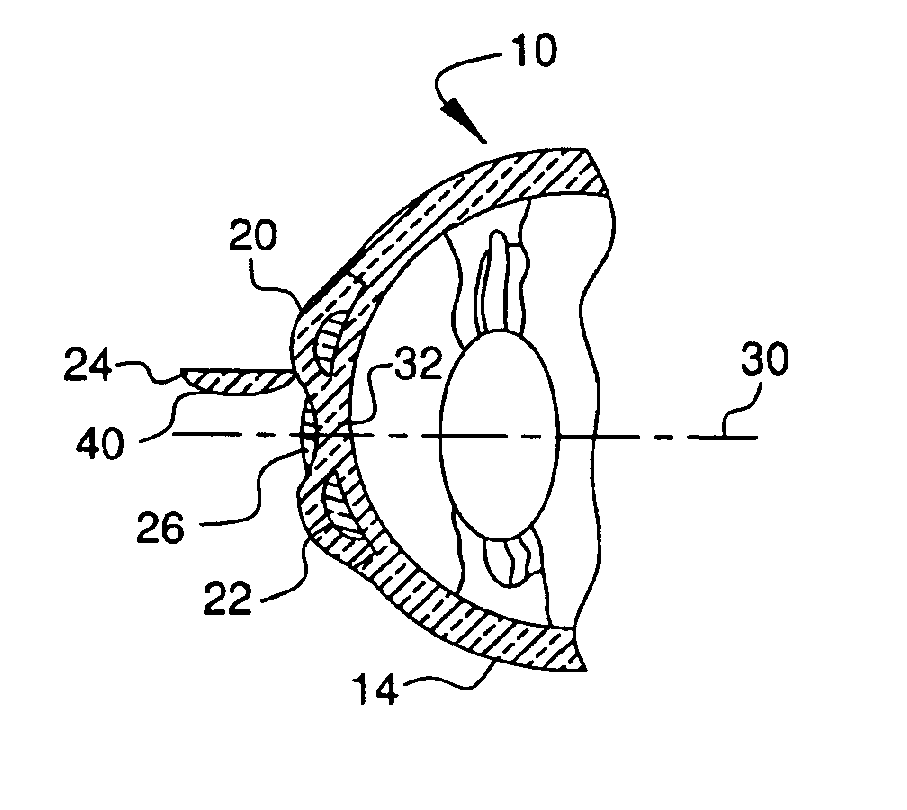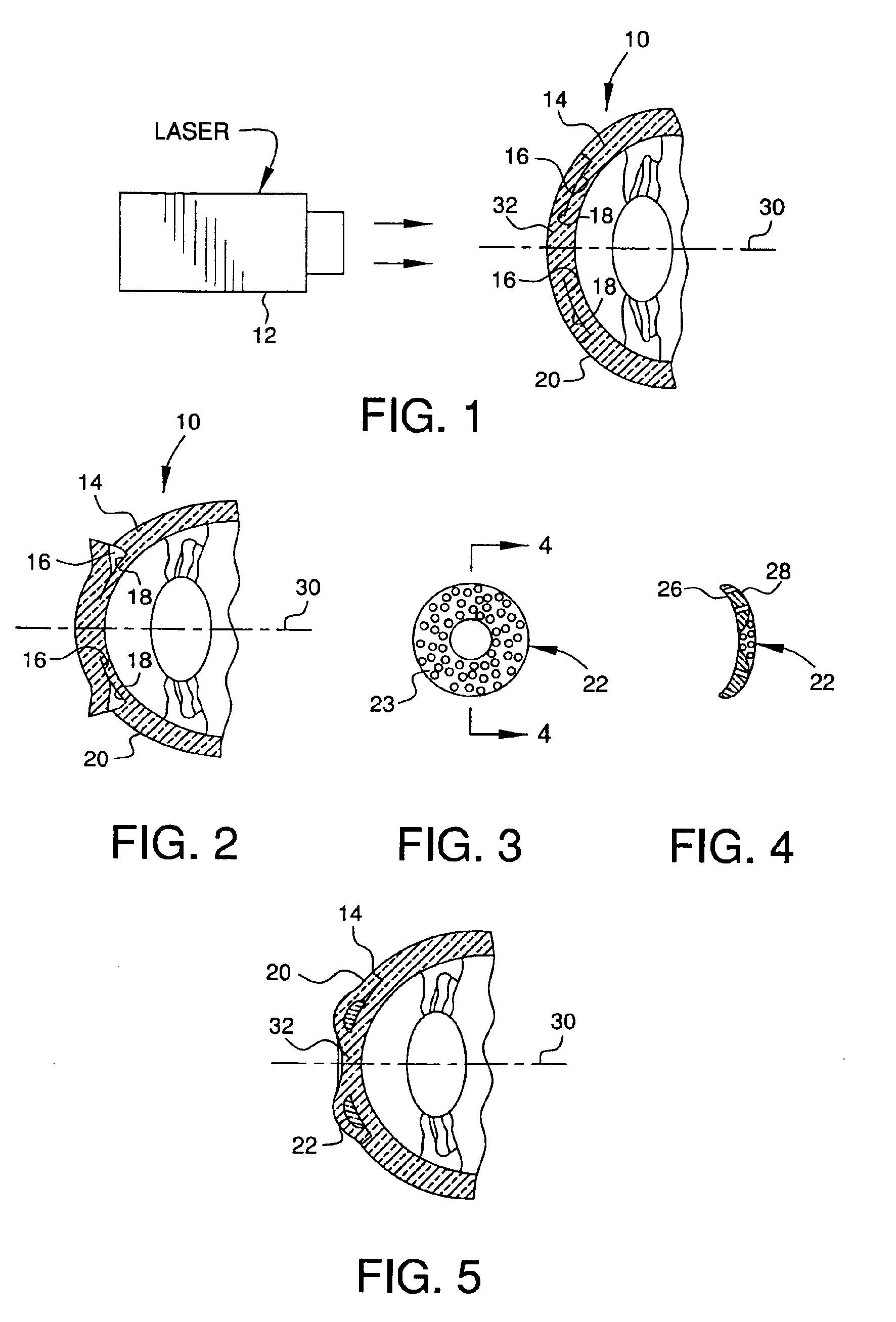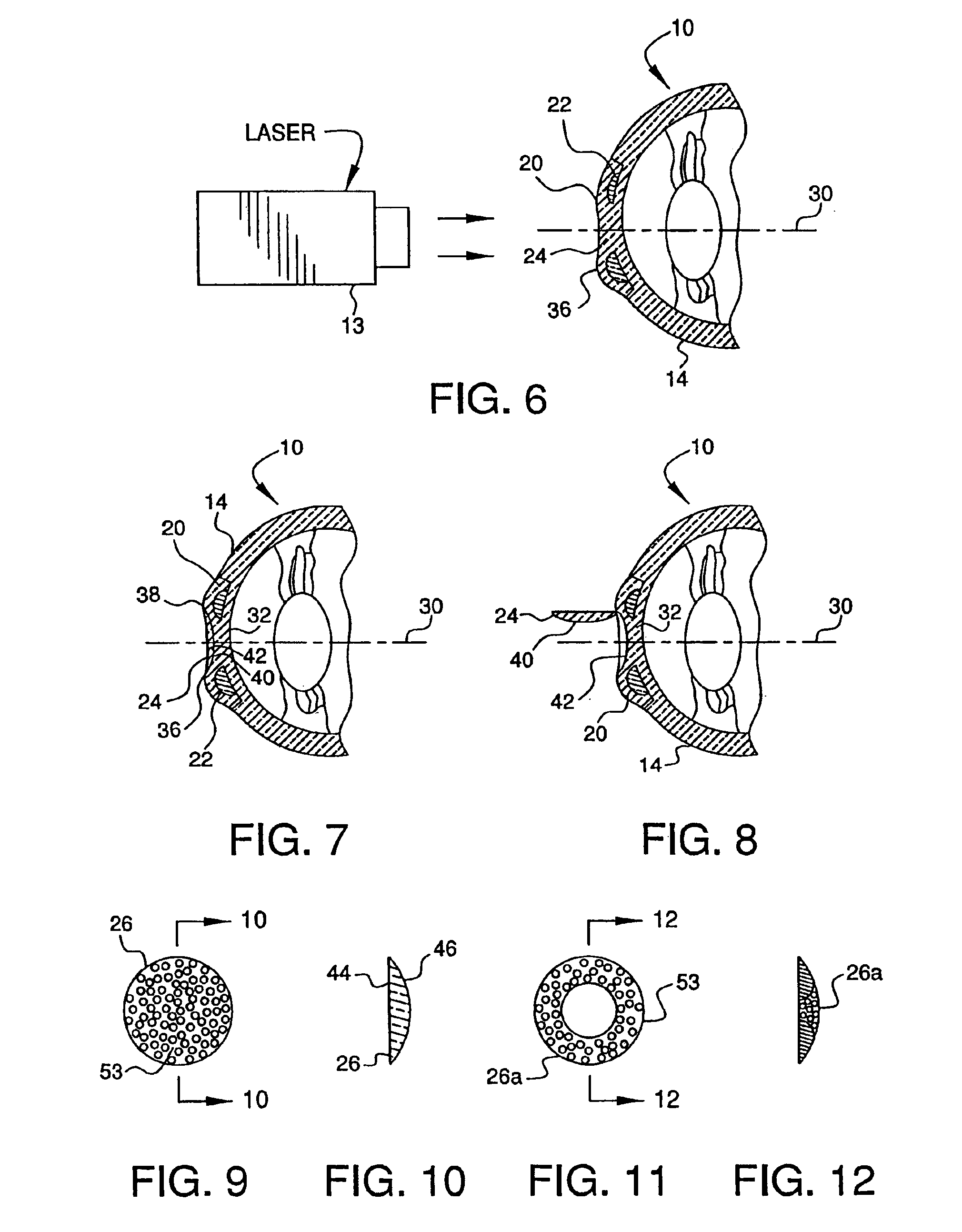Gradual correction of corneal refractive error using multiple inlays
- Summary
- Abstract
- Description
- Claims
- Application Information
AI Technical Summary
Benefits of technology
Problems solved by technology
Method used
Image
Examples
Embodiment Construction
As initially shown in FIGS. 1-17, the refractive properties of eye 10 can be altered using laser 12 to separate an inner portion of the cornea 14 into first internal corneal surface 16 and second internal corneal surface 18. This separation creates an internal corneal flap 20 in the cornea 14, under which a first component or intracorneal inlay 22 can be placed. Additionally, as discussed in more detail below, a second flap 24 can be formed in the surface of the cornea, and a second separate component or intracorneal inlay 26 can be inserted under the second flap (see FIGS. 7-17). Each inlay itself changes the shape of the cornea and thus the refractive properties thereof, and thus by inserting either or both inlays, it is possible to correct myopia, hyperopia and / or astigmatism.
To begin, the refractive error in the eye is measured using wavefront technology, as is known to one of ordinary skill in the art. The refractive error measurements are transmitted to a computerized lathe (n...
PUM
 Login to View More
Login to View More Abstract
Description
Claims
Application Information
 Login to View More
Login to View More - R&D
- Intellectual Property
- Life Sciences
- Materials
- Tech Scout
- Unparalleled Data Quality
- Higher Quality Content
- 60% Fewer Hallucinations
Browse by: Latest US Patents, China's latest patents, Technical Efficacy Thesaurus, Application Domain, Technology Topic, Popular Technical Reports.
© 2025 PatSnap. All rights reserved.Legal|Privacy policy|Modern Slavery Act Transparency Statement|Sitemap|About US| Contact US: help@patsnap.com



